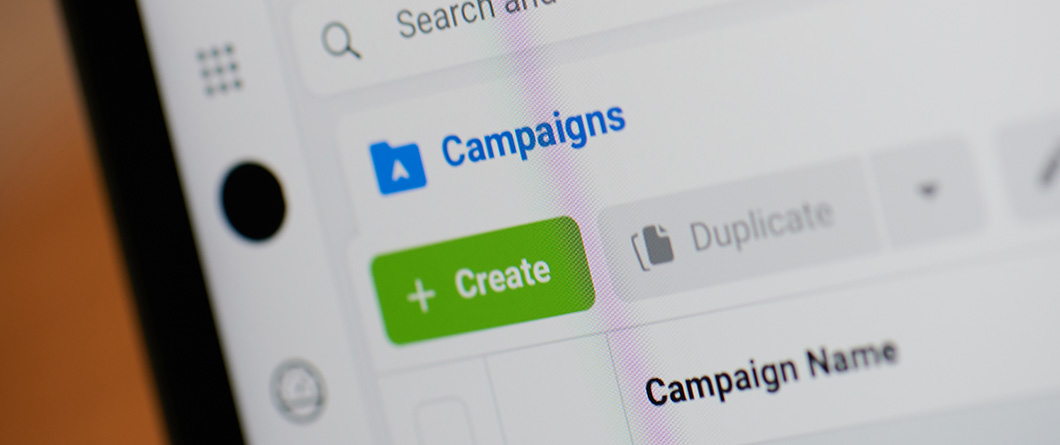
How to Choose the Right Advertising Platforms That Align With Your Business Goals
Choosing the right advertising platform goes beyond picking the one with the biggest user base or the flashiest features. Instead, it’s about selecting a platform that directly aligns with your business goals and helps you connect with the right audience in the most effective way. With so many options available, the challenge lies in determining which platform will give you the best return on investment (ROI) and drive the performance you need to succeed.
In this blog, we’ll break down the process of evaluating advertising platforms and explain how to choose the right one for your goals, whether you’re looking to build brand awareness, boost sales, or engage with a specific demographic. We’ll cover everything from understanding your target audience and business objectives to evaluating top platforms like Facebook, Instagram, Google Ads, TikTok, and more. By the end, you’ll have the insights to make smarter decisions and drive better results with your digital advertising investment.

Understanding Your Business Goals and Target Audience
Every successful ad campaign starts with a clear understanding of your business goals. Are you aiming to grow brand awareness, drive more leads, or convert site visitors into paying customers? Each of these goals requires a different approach and a different platform to achieve optimal results. Take the time to identify the specific outcomes you want from your advertising campaign. Do you need to increase website traffic, generate high-quality leads, or engage a loyal customer base? These goals will inform the selection of your platform and ad formats, ensuring your strategy is aligned with what matters most to your business.
For example, if you’re a healthcare organization trying to attract patients, Google Ads and the Google Display Network offer precise targeting options, allowing you to reach users who are actively searching for your services. Alternatively, if you’re a restaurant looking to build brand awareness in a specific area, Facebook and Instagram ads could be ideal for reaching your local community through targeted social ads.
Your target audience plays an equally critical role in platform selection. Understand where your audience spends their time online and how they engage with content. For example, if you’re targeting a younger demographic, TikTok ads might offer the best opportunity for engagement, with its short-form video format and viral potential. If you’re trying to engage professionals or business decision-makers, LinkedIn ads could be more effective, allowing for targeted B2B marketing with options like sponsored content and InMail.
Dive deep into audience insights by considering factors such as:
- Demographics (age, gender, location, income)
- Interests and behaviors (sports enthusiasts, tech lovers, eco-conscious consumers)
- Content preferences (video consumption, blog reading, social media interactions)
The better you understand your audience, the more effectively you can use a marketing strategy to reach them through the right advertising platform. Social ads, such as Facebook Ads or Instagram Ads, are great for targeting specific groups based on interests, while Google Ads can help you reach people actively searching for products or services similar to yours.
Matching your platforms for your business with the right audience ensures your advertising spend goes further, delivering higher returns. So take the time to identify who your customers are, where they’re most active, and how they consume content to make informed decisions that align with both your marketing strategy and your campaign goals.
Evaluating Marketing Platforms

Choosing the right platform for your ad campaign goes beyond surface-level features like reach or flashy tools. To get the most out of your advertising investment, you need to evaluate each platform based on how well it aligns with your goals and audience. This involves diving into the unique characteristics of each platform, as well as understanding how they support your specific campaign objectives.
Start by considering targeting capabilities. Each platform offers different levels of control over who sees your ads. For example, Google Ads allows you to target users actively searching for specific terms, offering high intent and precision for businesses that cater to immediate needs, like home services or healthcare. If you’re looking to build a broad brand presence, Facebook Ads or Instagram Ads provide more sophisticated targeting options based on interests, demographics, and behaviors, making them great for reaching a wide range of people in specific categories.
Next, assess the ad formats that each platform offers. Not all platforms excel with every type of ad format. For example, TikTok Ads are built for short-form, engaging video content, making it an ideal platform for brands looking to showcase creativity and connect with younger, more visual consumers. On the other hand, LinkedIn Ads are more suited for professional services, offering formats like sponsored content, InMail, and text ads that allow businesses to directly engage with decision-makers and industry leaders.
Consider the return on investment (ROI) for each platform as well. Platforms like Facebook Ads and Google Ads allow you to measure your ad spend against performance metrics like click-through rates, conversions, and overall campaign performance, providing clear insights into how effective your ads are at driving results. Depending on your business goals, you might prioritize platforms with proven cost-efficiency or those that offer the best lead quality.
A digital ad platform comparison will help you weigh the pros and cons of each platform. Is your goal to reach a broad audience quickly? Facebook and Instagram could be your best bet. Do you need to target a specific professional group? LinkedIn’s precision targeting is unmatched for that. Ultimately, the right platform will depend on your marketing strategy, your target audience, and how you want to interact with them.
Digital Advertising Investment and Budget Considerations

When planning your digital advertising strategy, your budget plays a significant role in determining where to focus your efforts. Allocating your budget effectively across different platforms can have a direct impact on your overall marketing performance and ROI.
Start by defining your ad spend based on your campaign objectives. If your goal is brand awareness and reaching a wide audience, consider starting with platforms that provide broad reach, like Facebook Ads and Instagram Ads. These platforms are designed to deliver high-volume impressions, which can be great for visibility but might come with a higher cost-per-impression. If you’re focused on more direct lead generation or capturing high-intent customers, platforms like Google Ads or LinkedIn Ads can be a better fit, as they allow for more targeted and specific bidding strategies based on search intent or professional status.
Another important factor to consider when making your budget decisions is the platform’s pricing structure. While Google Ads operates on a pay-per-click (PPC) model, Facebook Ads and Instagram Ads offer options like cost-per-impression (CPM) or cost-per-action (CPA), which could be better suited for campaigns focused on engagement or conversions. Knowing how each platform charges will help you allocate your funds more effectively and avoid overspending on platforms that may not generate the results you’re looking for.
Think about testing different ad formats and budgets on various platforms before committing to one strategy long-term. You can experiment with smaller budgets on platforms like TikTok Ads or LinkedIn Ads to gauge which one performs best for your business. Platforms like Google Ads also allow you to test different keywords and bidding strategies to find the most cost-effective way to reach your audience.
Lastly, consider the lifetime value of your customer base. Are you building a brand that will continue to engage customers over time, or are you trying to convert short-term sales? A long-term approach may require sustained investment across multiple platforms to build brand recognition and loyalty. A focused, short-term campaign might require more aggressive budgeting on platforms that deliver faster results, like Google or Facebook, where you can quickly reach a larger audience.
Choosing the Right Ad Platform for Your Campaign

Once you’ve narrowed down your options and evaluated the strengths of each platform, the next step is to make your final decision based on your specific campaign objectives. Choosing the right advertising platform isn’t just about popularity; it’s about aligning the platform’s strengths with the goals you’re working to achieve.
For example, if your goal is lead generation, Google Ads might be the best fit, as it allows you to target users who are actively searching for products or services similar to what you offer. When people are already looking for a solution, you can capture their attention at the moment they’re most likely to convert. LinkedIn Ads, on the other hand, are perfect for B2B campaigns, allowing you to target professionals, industries, and even specific job titles to directly reach decision-makers.
If brand awareness is your primary objective, platforms like Facebook Ads and Instagram Ads offer highly visual, engaging formats that help your brand stand out. With options like carousel ads, video ads, and stories, you can showcase your brand in creative ways and increase visibility among your target audience. These platforms also provide detailed audience insights, enabling you to fine-tune your targeting and improve ad performance.
For businesses that rely heavily on customer engagement, platforms like TikTok Ads can offer dynamic opportunities. With its emphasis on short-form video content and user interaction, TikTok allows you to build excitement around your brand and create viral moments. The platform’s younger demographic also opens up doors for creative campaigns that capture attention quickly.
Ultimately, the right platform for your campaign will depend on your business goals, your budget, and your audience. Carefully consider what you want to achieve and how each platform can help you get there. By aligning your ad campaign with the right platform, you set yourself up for greater success.
A Deep Dive Into Specific Advertising Platforms

With a wide range of platforms available, it’s important to dive deeper into the unique advantages of each. Each platform has distinct characteristics that make it more suited to certain types of campaigns.
Facebook Ads are ideal for businesses that want to reach a broad audience while also fine-tuning their targeting. Facebook offers a variety of ad formats, including video ads, image ads, and carousel ads, which makes it easy to test different creative approaches. The platform also provides robust analytics, so you can track campaign performance and optimize in real time. Facebook is particularly effective for local businesses aiming to increase foot traffic or e-commerce brands looking to drive online sales.
Instagram Ads offer similar targeting benefits, but with a focus on visual content. If your product or service lends itself to eye-catching images or videos, Instagram is a great choice. The platform is well-suited for lifestyle brands, fashion retailers, and anyone with a highly visual offering. Instagram’s popularity with younger audiences also makes it a go-to platform for brands looking to connect with a Gen Z or millennial demographic.
LinkedIn Ads stand out for B2B marketing and professional services. If you’re trying to reach professionals, connect with industry leaders, or generate leads from businesses, LinkedIn provides unparalleled targeting options. With features like InMail, sponsored content, and text ads, LinkedIn allows you to reach a high-quality, professional audience, making it a go-to for industries like finance, education, and technology.
Google Ads is essential for businesses looking to capture high-intent search traffic. With Google’s search engine ads, you can target users who are actively searching for specific products, services, or solutions, which means they’re already in the mindset to make a purchase or take action. The Google Display Network also allows you to extend your reach by placing banner ads on thousands of websites, giving you access to a broader audience while still targeting based on keywords, interests, and demographics.
TikTok Ads offer businesses a chance to tap into the viral, creative nature of short-form video content. With its algorithm-driven feed and engagement-focused features, TikTok allows you to connect with a highly engaged, younger audience. Brands looking to build excitement, create challenges, or go viral will find TikTok a powerful platform to showcase their personality and engage consumers in a fresh way.
Each of these platforms has its own set of strengths, and the right choice for your business will depend on your marketing channel strategy, budget, and goals. By taking the time to understand what each platform offers and how it can support your specific objectives, you can maximize your advertising potential and get the best results from your investment.
Strategic Media Planning for Maximum Reach

Once you’ve selected your advertising platforms, it’s time to think about how to maximize your impact across those platforms. Strategic media planning is all about aligning your ad content with the right platforms and creating a cohesive, effective campaign that drives results. A smart media plan integrates different platforms, creating a synergy that amplifies your message and broadens your reach.
The key to a successful media plan is balancing reach and frequency. Reach is the number of people who see your ads, while frequency refers to how often they see them. For brand awareness, you’ll want to maximize both reach and frequency by distributing your ads across multiple platforms. For example, a restaurant may use Facebook Ads and Instagram Ads to create a broad brand presence, reaching potential customers in the local area, while also ensuring that they see the ads multiple times to stay top-of-mind.
On the other hand, if your goal is conversion, you may want to focus more on reaching specific individuals through targeted platforms. For instance, Google Ads can help you reach high-intent customers searching for a specific product or service, while LinkedIn Ads can help engage professionals in certain industries or job roles, driving more targeted traffic.
A successful media plan will also incorporate ad testing to refine your messaging and creative. Testing different ad formats, copy, and visuals will help you determine what resonates best with your audience. Running A/B tests on various platforms can also reveal insights into which combination of ads and placements produces the highest return on investment (ROI). For instance, you might test a video ad on Facebook against a static image ad to see which one generates more engagement, then optimize your media strategy based on those results.
Finally, ensure your plan includes retargeting strategies to capture leads that didn’t convert initially. By serving ads to users who have previously interacted with your brand, you increase the likelihood of conversion. Retargeting on platforms like Facebook Ads and Google Ads allows you to stay in front of potential customers and nudge them toward taking action.
How to Evaluate Platform Effectiveness Over Time

Choosing the right advertising platform is just the first step in a long-term marketing strategy. To ensure your campaigns are consistently performing well, you need to evaluate their effectiveness over time. By closely monitoring and analyzing the data, you can make adjustments to maximize results and maintain the best possible ROI.
Start by setting key performance indicators (KPIs) that align with your goals. These might include metrics like click-through rate (CTR), conversion rate, customer engagement, and cost per conversion. Different platforms provide a variety of campaign performance reports, so take advantage of the detailed insights available. For example, Google Ads shows you which keywords are driving traffic, while Facebook Ads provides insights into engagement metrics, such as likes, shares, and comments.
Tracking return on investment is crucial to understanding the value of each platform. For instance, if you’re investing in Instagram Ads for brand awareness, you may track metrics like impressions and reach. But if you’re running an ad campaign with the goal of generating leads, you’ll want to focus on conversion rates and cost per lead. If you’re seeing high engagement on TikTok Ads but low conversions, it may be time to rework your ad creatives or tweak your targeting strategy.
It’s also important to regularly evaluate your audience’s response to your ads. Are your ads resonating with the right demographic? Use the platform’s targeting tools to refine your audience, whether by adjusting demographics, interests, or behaviors. Over time, as you gather more data, you can make data-driven decisions about which platforms and tactics are producing the best results.
Remember, the digital advertising landscape is dynamic, and platforms regularly update their features and algorithms. Staying informed about these changes allows you to adjust your strategy accordingly. For example, Facebook and Instagram frequently update their ad formats and targeting options, while Google Ads rolls out new bidding strategies and tools. Keeping an eye on these updates ensures that your campaigns remain relevant and continue to meet your business goals.
Making the Right Platform Choice: Your Path to Digital Advertising Success
Choosing the right advertising platform can significantly impact the success of your marketing campaigns. Whether you’re a healthcare provider trying to connect with potential patients, a restaurant aiming to drive foot traffic, or a tech company building a professional network, understanding your business goals and selecting the best platform to achieve them is key.
As you move through the platform selection process, keep your target audience, campaign objectives, and budget top of mind. Don’t be afraid to experiment with different platforms and formats—digital advertising investment is a fluid and evolving process. Test, measure, and adjust as you go. Your platform choice may evolve as your business grows and your goals shift, so always be open to revisiting your media plan.
Remember, success in digital advertising is not about choosing the most popular platform but about choosing the platform that works for you and your audience. The platforms we discussed, from Facebook Ads and Instagram Ads to Google Ads and TikTok Ads, each have unique strengths that can help you achieve your business goals and drive meaningful results.If you’re ready to elevate your marketing strategy and choose the right advertising platforms for your business, evok is here to help. We specialize in strategic media planning and can guide you through the process of selecting the most effective platforms to achieve your business goals. Let’s work together to ensure your advertising dollars are working as hard as they should be.